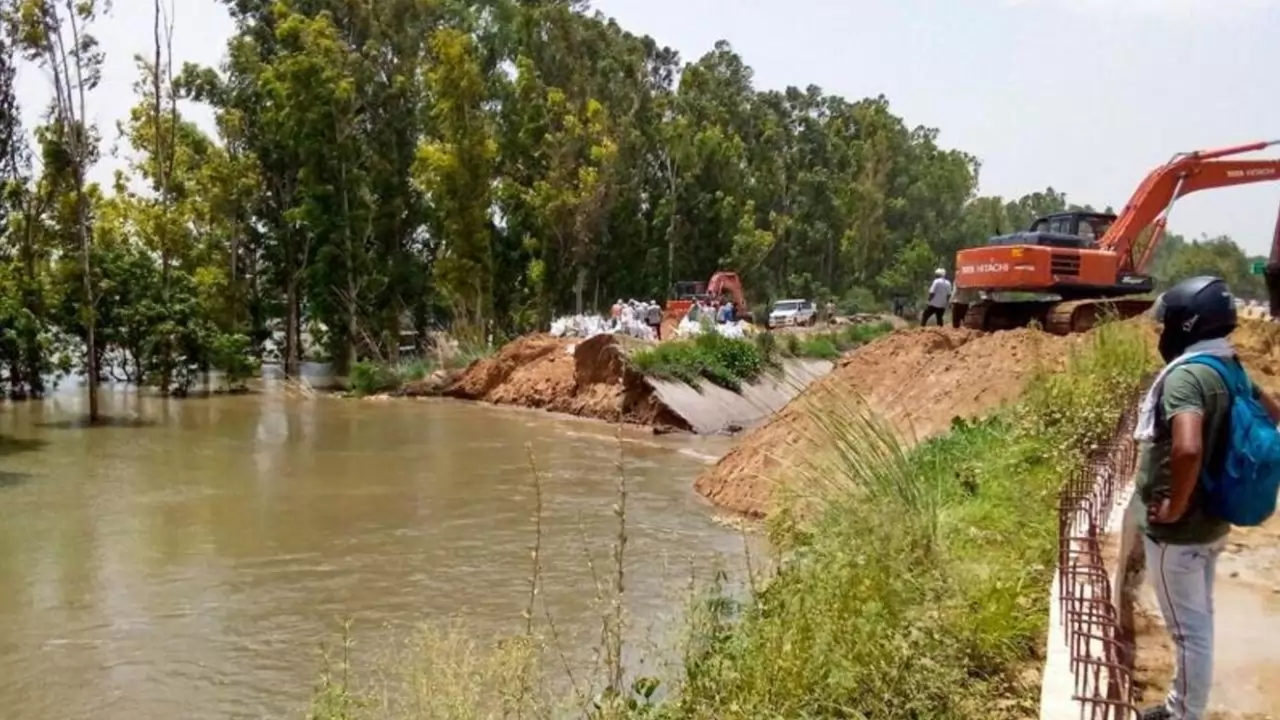
X/ANI
New Delhi: Residents of Bawana in North Delhi woke up to a calamity on Thursday morning as water breached the Munak canal barrage, flooding streets and entering homes in the area. The breach caused extensive flooding, compelling people to wade through waterlogged streets. Delhi's Minister for Water, Atishi, addressed the situation, stating that repair efforts are underway in collaboration with the Haryana government, responsible for managing the Munak canal. However, the history of Muank Canal is quite fascinating.
The construction history of the Munak Canal is equally fascinating. Since the 1980s, the Delhi government had been lobbying the central government for a solution to Delhi's water scarcity issues. Persistent pressure led to discussions and, in 1996, an agreement was brokered between the Delhi and Haryana governments, facilitated by the central government. This agreement outlined the construction plan for the canal, which was finalized in 2002. After completing all necessary formalities, construction commenced in 2003. Following nearly nine years of construction efforts, the Munak Canal was completed and underwent rigorous testing before officially commencing water supply to Delhi.
Initially built with excavated earth, the canal suffered from frequent water leakages that caused significant damage to farmers' crops. To mitigate these issues, the canal was later reconstructed using concrete, resulting in a saving of approximately 80 million gallons of water daily. During the Jat agitation in 2016, protestors seized control of the canal, leading to a severe water crisis in Delhi. In response, the central government deployed the army to regain control and manage the situation effectively.
The Munak Canal, revered as Delhi's lifeline for supplying drinking water to half of its population, bears a starkly contrasting reputation in Haryana, where locals dub it the "bloody river." This grim moniker stems from the canal's frequent role in grim discoveries—daily occurrences of bodies found within its waters. In cases of suspected murders or disappearances in districts traversed by the canal, law enforcement swiftly turns their attention to its murky depths.
The canal meanders through desolate landscapes, far removed from human habitation, making it a convenient site for perpetrators to dispose of victims undetected. Due to its rapid flow across district borders, a body dumped in the canal can traverse significant distances within half an hour, complicating identification efforts.
Stretching approximately 102 kilometers from the Munak Regulator in Karnal District, Haryana, to Hyderpur in Delhi, the Munak Canal is integral to the Western Yamuna Canal system. It channels Yamuna River waters through Khubru Barrage and Mandora Barrage before undergoing purification at multiple treatment plants. Ultimately, this water serves as a crucial source of potable water for more than half of Delhi's residents.





Copyright © 2026 Top Indian News
